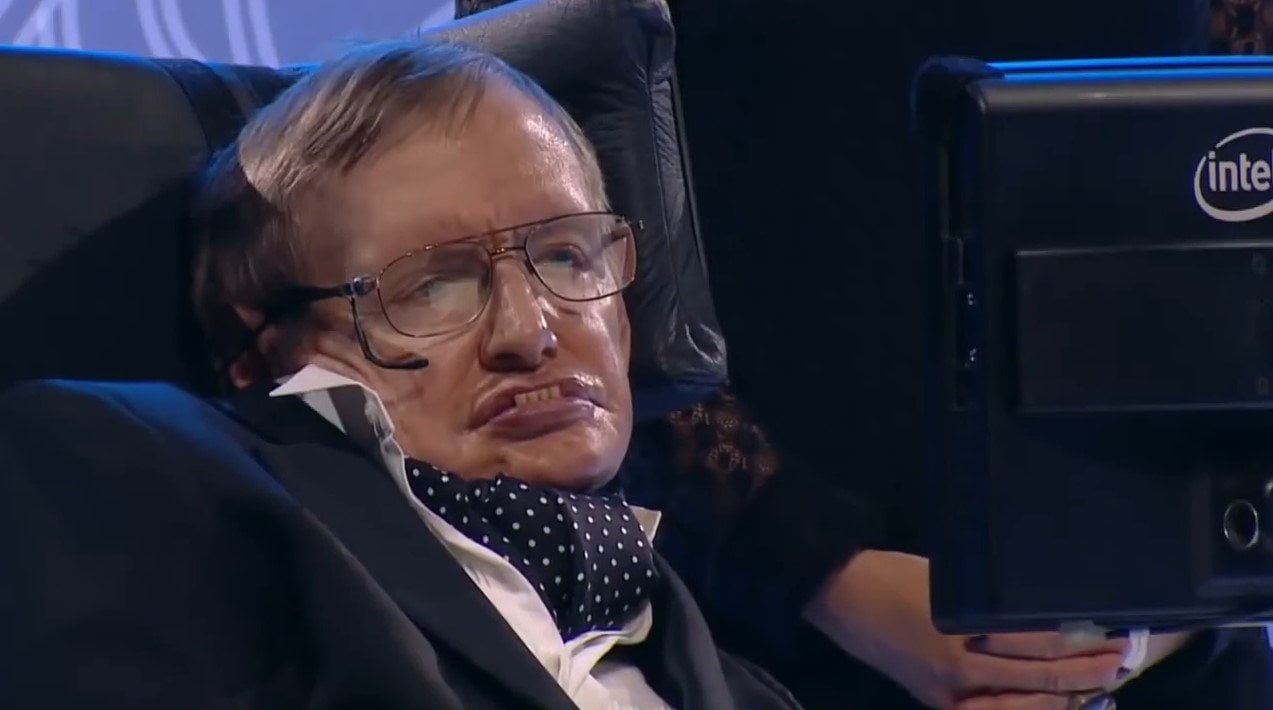A recent multiverse theory from Stephen Hawking suggests that the multiple universes that make up reality might not be too different from our own.
Stephen Hawking’s latest theory before his unfortunate death considers the multiverse – and provides an explanation that is much simpler than theorists previously thought. The work was completed just weeks before he passed away in March, and paints a picture o the last 13.8 billion years that is far less complicated than previous theories have proposed.
The work was published on Wednesday in the Journal of High Energy Physics, and is the result of a collaboration with Thomas Hertog – a Belgian physicist at the Catholic University of Leuven. The Guardian reports that Hertog said “we sat on this one for a very long time…I do believe he was really fond of it.”
In order to carry out the research with Stephen Hawking on the multiverse, Hertog traveled to Cambridge – and towards the end, communication became very difficult. According to Hertog, “I always had the impression that he never wanted to quit and, in a way, this was Hawking. He never showed any sign of wanting to quit…It was never said between us that this would be the last paper. I personally felt this might be the conclusion of our journey, but I never told him.”
This new multiverse theory is just another on a pile of explanations for how reality may function, but it’s looking as if it could be a viable one. Modern physics has several ideas of how the universe came to be, but by far the most popular idea is that the big bang was followed by bursts of “cosmic inflation” which created an endless number of universes that are now distributed throughout space.
The latest work challenges the view that our universe “is like an infinite fractal, with a mosaic of different pocket universes separated by an inflating ocean.” In the paper, Hertog and Hawking provide a multiverse theory that, instead of these universes being radically different from our own, they’re very much the same – not different from each other much at all.
The actual practical application of such a multiverse theory isn’t immediately apparent, but it may provide one possible answer for the explanation as to why – given all the hostile variations on the universe that were previously thought possible – we managed to find ourselves in a universe that is particularly well-suited to life.
“In the old theory there were all sorts of universes: some were empty, others were full of matter, some expanded too fast, others were too short-lived. There was huge variation,” said Hertog. “The mystery was why do we live in this special universe where everything is nicely balanced in order for complexity and life to emerge?”
“This paper takes one step towards explaining that mysterious fine tuning,” Hertog added. “It reduces the multiverse down to a more manageable set of universes which all look alike. Stephen would say that, theoretically, it’s almost like the universe had to be like this. It gives us hope that we can arrive at a fully predictive framework of cosmology.”
While this paper is the most recent development from Stephen Hawking, it isn’t the first time that the physicist had touched on the idea – serving as an update to a 1980s theory with more modern mathematical techniques used in theory. String theory describes reality through the interactions of one-dimensional objects known as cosmic strings.
Stephen Hawking, although he will no longer be contributing personally to the advancement of science after his death on March 14th, has contributed a great deal to the field of physics – bringing the field into public attention after rising to fame with the publication of A Brief History of Time. During a Thanksgiving service this year, his ashes will be interred at Westminster Abbey near the grave of Sir Isaac Newton – a suitable resting place for a physicist who has contributed so much to our understanding of the universe around us.
While this recent publication by Stephen Hawking regarding the multiverse is a significant contribution to our understanding of the universe, it’s just one more piece in the puzzle as surviving scientists start to continue the huge body of work that Hawking left behind when he passed away at the age of 76.





